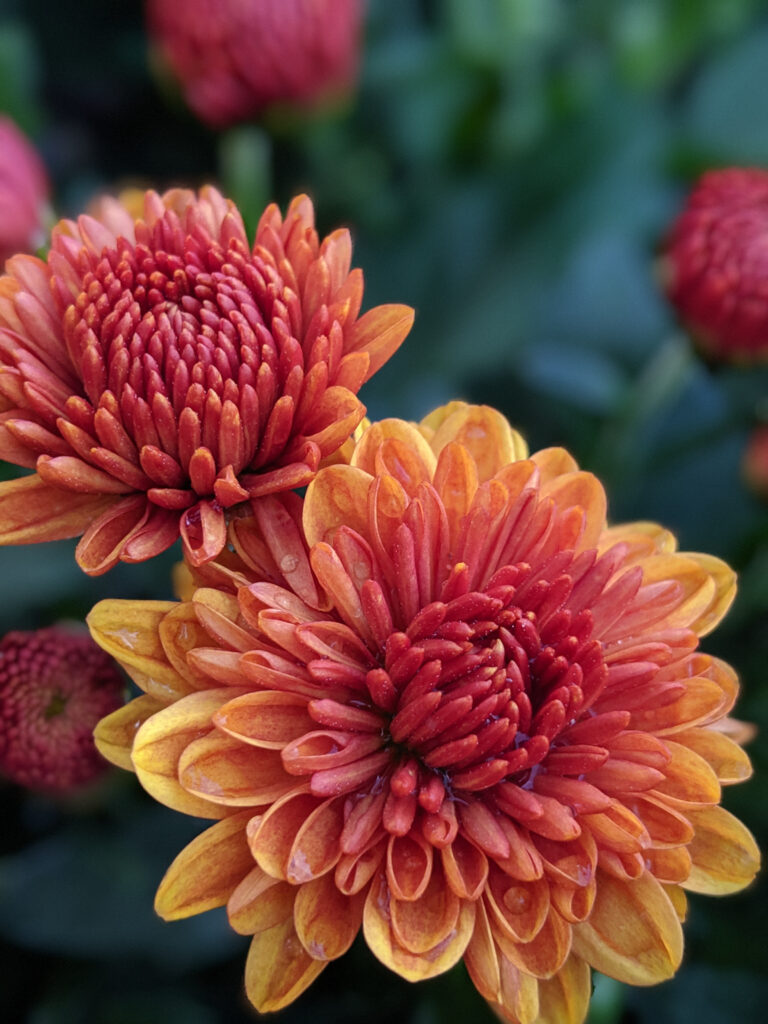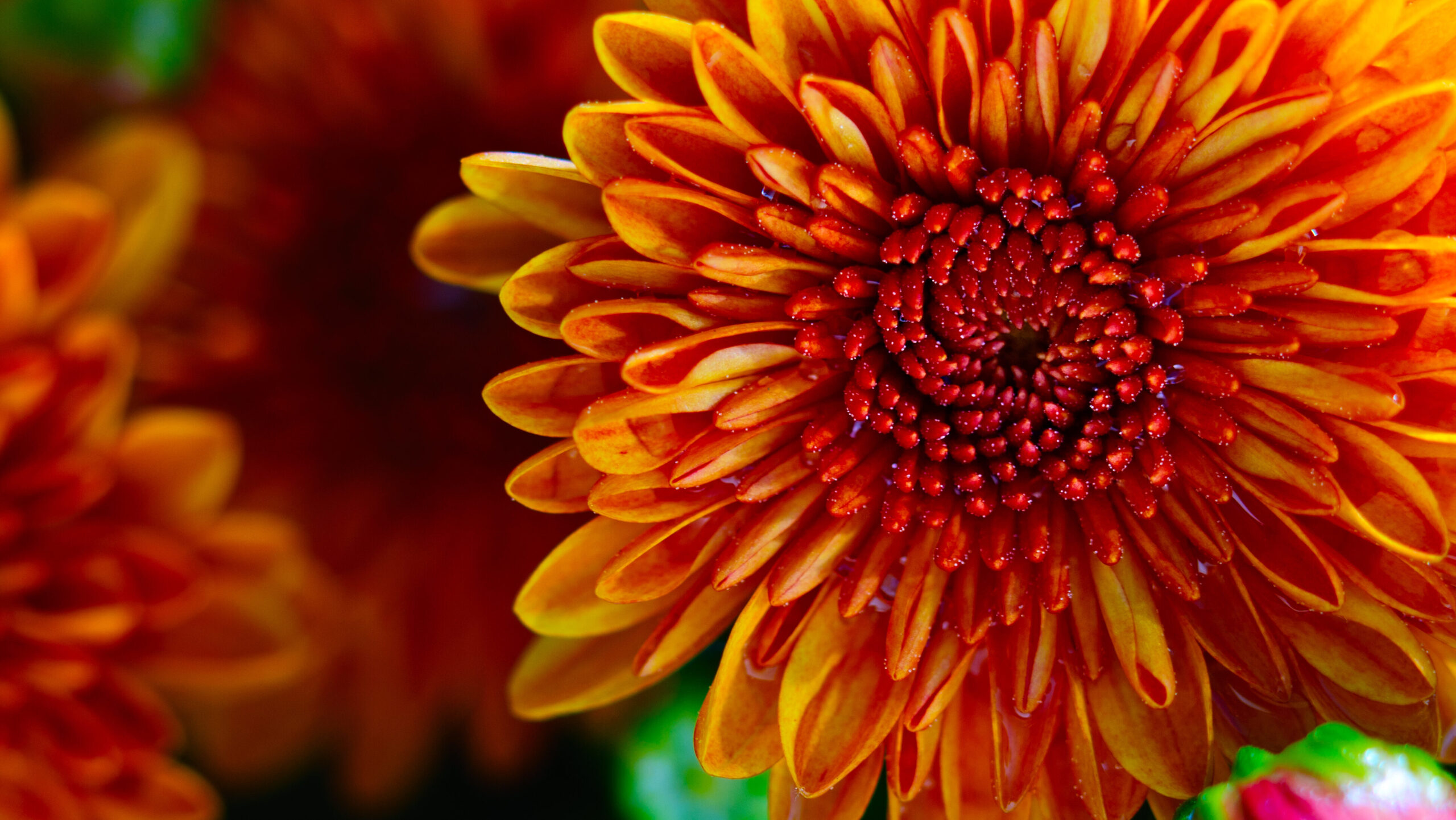Mastering Mum Care: Tips for Healthy Growth
Unlock the secrets to this popular staple crop with our comprehensive garden mum guide. From proper spacing and irrigation techniques to optimizing fertilization, learn how to cultivate healthy and vibrant mums that will impress.
Perfect Spacing for Perfect Mums
Ensure plants are appropriately spaced to avoid diseases and promote desired shape.
- Keep plants tight initially, until they are about to touch, then continue to spread out as space allows.
Careful Irrigation for Strong Roots
Flood floors can lead to over-saturation of young mums, delaying root development.
- Wait until plants establish a robust root system, typically three to four weeks post-transplant, before implementing flood floors.
Prioritize early, heavy, and frequent irrigation to prevent water stress and premature budding.
- This approach is especially crucial in regions with fluctuating night temperatures that can trigger premature budding.

Download Our Full Garden Mum Crop Program
Mastering Mum Fertilization: Insider Tips
Garden mums are heavy feeders and need fertilizer right from transplanting. The right fertilization program depends on your water quality, as high levels of carbonates and bicarbonates can raise media pH.
Test Your Water Quality: Determine alkalinity levels before choosing a fertilizer.
MPPI offers water testing services to help you determine the best fertilizer schedule for your garden mums.
Tailored Solutions for Alkalinity Management and Fertilization
- For High Alkalinity (above 250 ppm CaCO3): Use acid injection for a consistent feed program.
- Recommended Product: Plant-Prod® Solutions 17-5-17 Complete as a general feed.
- For Low Calcium/Magnesium: Use Plant-Prod 12-2-14 Optimum every third feeding.
- If Acid Injection Isn’t an Option: Alternate between acidic blends and a Cal Mag fertilizer based on your water sample results.

For more detailed guidance, check out our full garden mum program.
